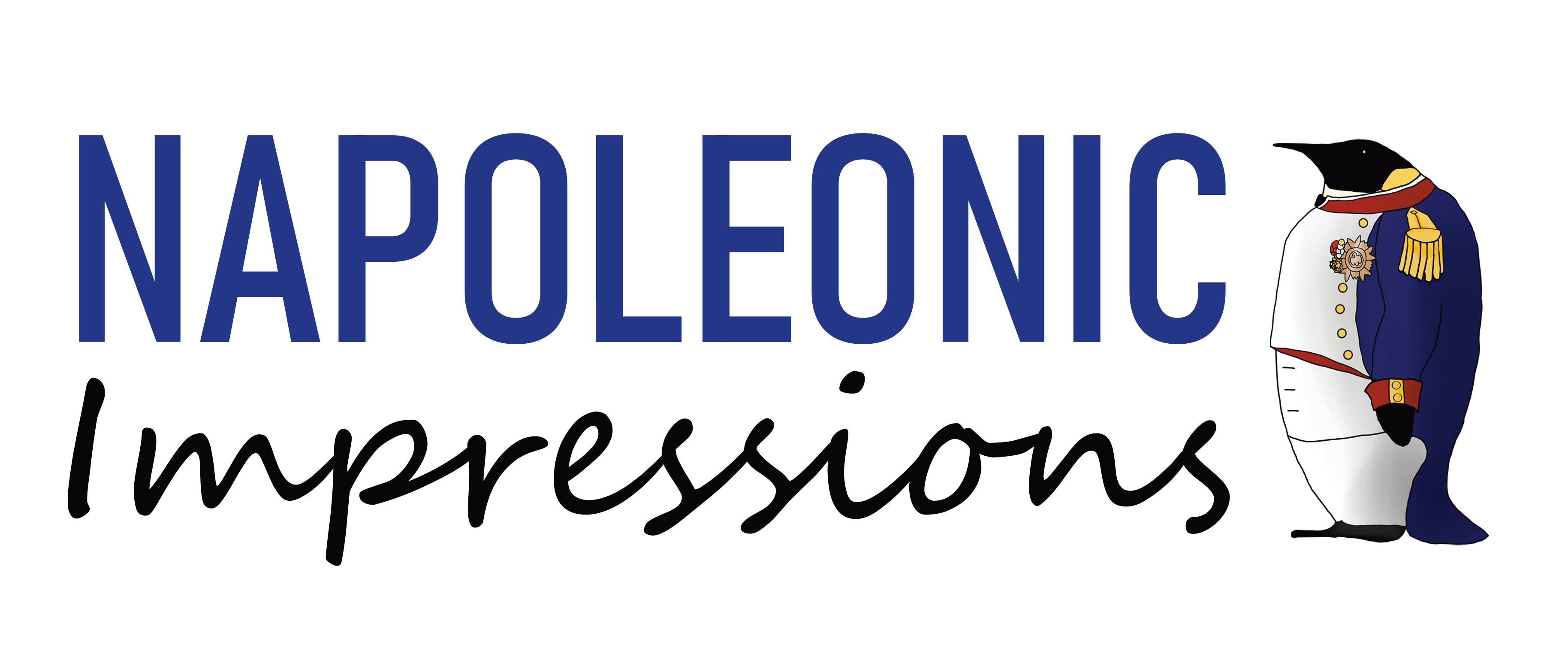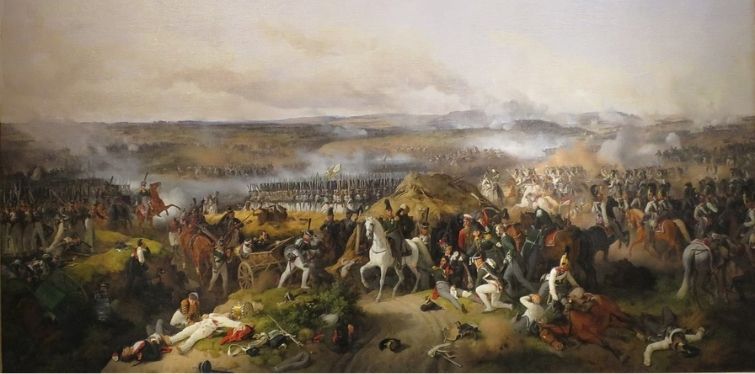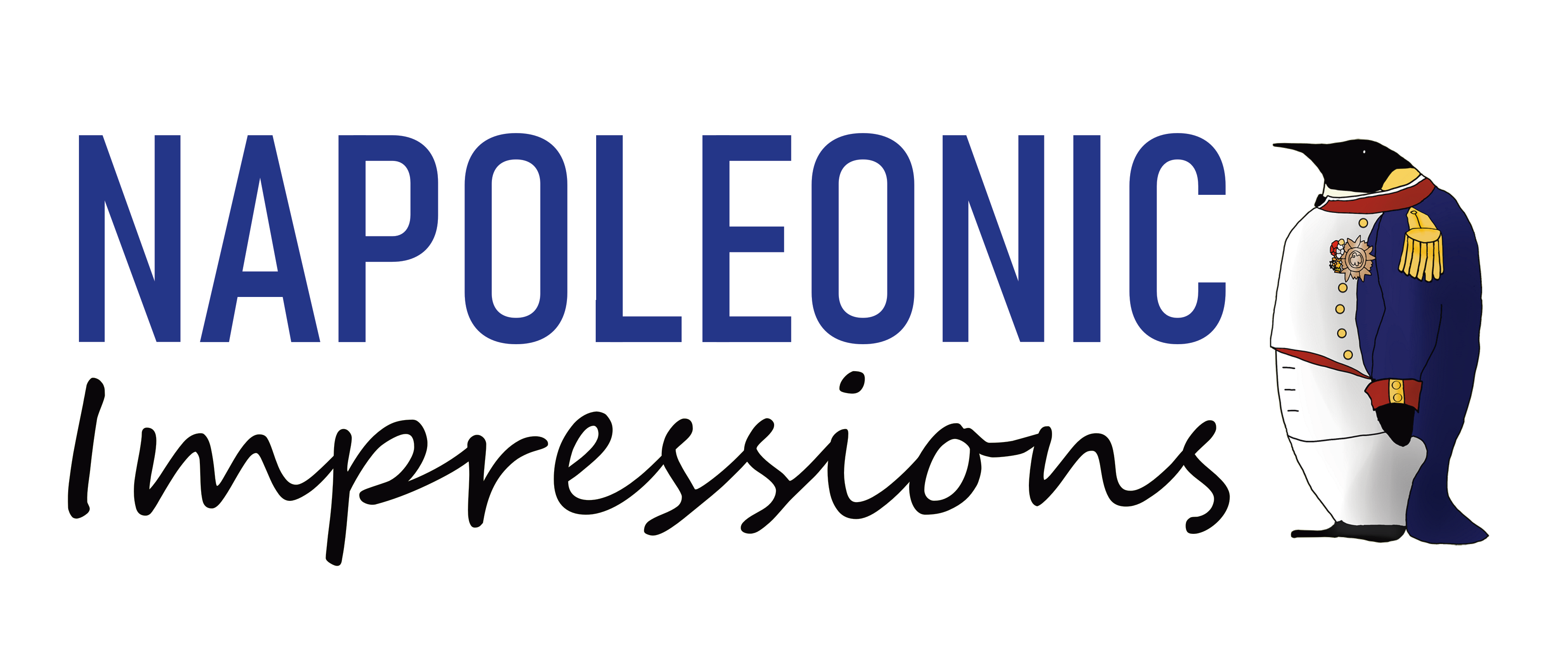This is Part 2 of a three part series presenting a narrative of the course of Napoleon's 1812 campaign, covering the Battle of Borodino, the Fire of Moscow, and the battles of Tarutino and Maloyaroslavets. Check out Part 1, our existing blog posts on the topic of Napoleon's invasion of Russia, as well as our publishing schedule.
As Kutuzov ordered the army to withdraw from Tsarevo-Zaymishche, once again the Russian army was deprived of the chance of facing Napoleon in a field battle. Kutuzov organised a strong rearguard under General Pyotr Konovnitsyn to cover the retreat. Staff officers were dispatched along the road to Moscow to find a suitable defensive position. Eventually, they stumbled across the village of Borodino, some 10km to the west of Mozhaisk. On 3 September, after joining up with General Mikhail Miloradovich and some 15,000 raw recruits, the army arrived at Borodino and Kutuzov gave orders to prepare for battle. At Borodino, Kutuzov had around 150,000 men at his disposal, although around 20,000 were militia.
Kutuzov deployed Barclay’s First Army on the Smolensk-Moscow Road behind the River Kolocha. The steep banks of the river presented a formidable obstacle to any assaulting force. The Russian left, in the form of Bagration’s Second Army, were deployed to the southwest of Borodino. Despite being criss-crossed by ravines, the terrain here was more open and formed weakest part of the Russian line. In order to strengthen this sector, a redoubt was built on the Shevardino heights about a kilometre in front of Bagration’s position. The purpose of the redoubt was not entirely clear as it was isolated from the main line and therefore could not be effectively supported by the rest of the army – on the other hand it was too well fortified to serve as a simple observation post.
The Grande Armée began to arrive on the battlefield during the afternoon of 5 September. Prince Eugene de Beauharnais, commanding his Italian IV Corps, pursued Konovnitsyn’s rearguard to the village of Borodino itself. When he noticed the Russian redoubt at Shevardino, Napoleon was afraid it would threaten his flank and immediately ordered Davout to seize the redoubt. Both sides were engaged in an intense struggle for the position and the redoubt changed hands on several occasions, with both sides introducing fresh units into the fight. Bagration himself appeared at the head of the 2nd Combined Grenadier Division to retake the redoubt. The struggle for Shevardino carried on late into the night, when the Russians finally withdrew.
Kutuzov had chosen to abandon the redoubt when he realised that the enemy could flank around it via the Old Smolensk Road. Although overgrown in places, the road remained passable and thus rendered the redoubt obsolete. Bagration was thus forced to take a new position around the village of Semenovskoe, while Kutuzov moved General Nikolay Tuchkov’s III Corps – previously in reserve – to defend the village of Utitsa on the Old Smolensk Road. On 6 September, the Bagration hurried to fortify his new line by constructing three fleches (arrow-shaped fortifications) in front of Semenovskoe.
The Battle of Borodino began early on the morning of 7 September. The events of the battle are presented in greater detail in our video on the Adventures in Historyland Youtube channel. At Borodino, Napoleon had 135,000 men at his disposal. He attacked the Russian position with three columns. Prince Eugene’s IV Corps was directed against the Great Redoubt which anchored the Russian centre. Prince Poniatowski’s V Corps advanced against Utitsa on the Old Smolensk Road. The main assault was led by Marshals Davout (I Corps) and Ney (III Corps) against the Russian left at Semenovskoe.
The heavy pressure on the Russian left forced Kutuzov to commit reserves to support Bagration and Tuchkov early in the battle, including General Baggovut's II Corps, and three Guards regiments. Nevertheless, the Russian divisional generals in the sector – among them Dmitry Neverovsky, Mikhail Vorontsov and Pyotr Konovnitsyn – bravely repulsed the enemy with fresh forces to retake the fleches. Meanwhile, despite a slow start, Poniatowski’s Polish V Corps successfully occupied Utitsa, while Tuchkov took up a defensive position on the hill behind the village. In the Russian centre, following heavy artillery fire and an assault by the French 30th Line Regiment, the Russians were forced to relinquish the redoubt, but a brilliant countercharge led by General Alexei Ermolov and artillery chief Alexander Kutaisov retook the position, at the cost of the latter’s life. General Bonamy, commander of the 30th Line Regiment, was taken into captivity. Ermolov claimed that the French suffered 3,000 casualties within 10 minutes.
Around three hours into the battle, while organising a counterattack to retake the fleches, Prince Bagration was struck by a shell in the leg and received a mortal wound. Deprived of their inspirational leader, many Russian units fled in disorder. Only the three Guard regiments which were engaged – the Izmailovsky, Finlyandsky (Finnish) and Litovsky (Lithuanian) – remained in good order. Napoleon now had a golden opportunity to break the Russian line and split the Russian army before the new Second Army commander – General Dokhturov – could arrive and reorganise his forces.
Despite repeated requests to reinforce Davout and Ney with the Guard to secure a decisive victory, Napoleon hesitated and argued that it was too early to do so. One cause for this hesitation was a demonstration of the Russian light cavalry against Eugene’s left and rear. Although a few thousand light cavalrymen could never hope to make a decisive impact on the tactical situation, the Cossacks had a significant psychological impact on the French, prompting Napoleon to spend two hours to stabilise the situation before reassuming his offensive intentions.
After the Cossacks retreated, Napoleon’s thoughts returned to winning the battle. With Davout and Ney exhausted, he turned his attention to Eugene’s Corps at the Great Redoubt. Without any fresh infantry units, he ordered II Cavalry Corps under General Auguste de Caulaincourt to take the redoubt from the rear and flanks. The position was captured by French and Saxon cavalry, with most of the Russian defenders fighting until the very end. As he turned to pursue the enemy, Caulaincourt was hit by a bullet and was killed.
Convinced he had won the battle, Napoleon rode up to the front line and was shocked to see that the Russians had taken a new defensive position on a slope a kilometre to the east. The French cavalry charged the Russian infantry squares, hoping that a final effort would be sufficient to rout the enemy. Instead, the infantry stood firm with artillery support while Barclay de Tolly gathered up his cavalry reserves, including the Chevaliergardes and Horse Guards – the cream of the Russian cavalry – to counter charge the enemy cavalry. Despite superior numbers, the French cavalry were defeated and forced to withdraw. The field was littered with the corpses of men and horses – horses which Napoleon would have trouble replacing. By the end of the day, 70,000 men lay dead and wounded on the field. Napoleon later said of the battle, 'The French proved themselves worthy of victory, and the Russians proved themselves invincible.'
Despite promises to renew battle the following day, Kutuzov recognised his army was in poor shape following the bloody struggle and ordered retreat, though promised that another battle will be fought before Moscow. The Russian army duly took up a position near the village of Fili, several miles to the west of Moscow. The position, which had been chosen by Bennigsen, was extremely poor – in front of a bend of the Moskva River, with several units isolated by woods and deep ravines. Kutuzov duly convened a war council at his headquarters in Fili to decide the question. The deliberations carried on for several hours, with Barclay advising retreat and Bennigsen in favour of making a stand. Hitherto close friends, Kutuzov and Bennigsen were engaged in a fierce argument over the suitability of the terrain.
Eventually, Kutuzov called the meeting to an end and announced his decision to retreat. Kutuzov led his army through Moscow in the direction of Ryazan to the southeast. The men encountered masses of civilians evacuating the city and made slow progress. General Miloradovich, commanding the Russian rearguard, realised that Murat’s vanguard would soon catch up and threaten the survival of the Russian army. He sent a messenger to Murat promising to hand over Moscow in exchange for a day's truce. Despite initially refusing, Murat eventually accepted after Miloradovich threatened to fight on every street corner. The 24 hour truce, which Murat extended by a further 12 hours, allowed the Russians to successfully evacuate the army from Moscow.
On the evening of 14 September, a week after the Battle of Borodino – or what Napoleon called La Bataille de la Moskowa – Napoleon saw the Moscow skyline gleaming with golden onion domes for the first time. Expecting a delegation of city officials to surrender the city to him, he instead found Moscow completely deserted. The following morning he rode into the Kremlin to the strains of La Victoire est à nous, confident that sooner or later Tsar Alexander would have to come to terms. Later that day he noticed that fires were heading towards the Kremlin. He stayed at the Petrovsky Palace outside the city for three days while the fire was brought under control.
The causes of the fire in Moscow have been a source of debate among French and Russian historians, but it is likely that Governor of Moscow Fyodor Rostopchin had a hand in the fire. Even if he did not give specific orders, by releasing all prisoners and evacuating the fire department, he created the conditions for fires to spread throughout the wooden city. 2/3 of Moscow was destroyed. Nevertheless, Napoleon returned to the Kremlin and waited. Although the Grande Armée still had around 90,000 combat-worthy men, the Russian scorched earth strategy left it running low on supplies. In increasing desperation, Napoleon wrote to Tsar Alexander requesting peace negotiations. Although some elements of St Petersburg society was dismayed by the surrender of Moscow and urged the Tsar to enter negotiations, Alexander held firm. He knew that with every day Napoleon lingered in Moscow, the French strategic situation would further deteriorate while that of the Russians would improve. Far from contemplating peace, Alexander was hatching a plan to surround Napoleon’s army by ordering General Wittgenstein and Admiral Chichagov to operate against his northern and southern flanks.
Basking in the glory of his supposed victory, Napoleon had lost sight of Kutuzov’s army. Kutuzov anticipated that Napoleon would have trouble keeping his army supplied and would soon turn south where supplies were more plentiful. From the Ryazan Road the army cut back onto the road to Kaluga, setting up camp at Tarutino some 100 kilometres to the southwest of Moscow. Murat’s vanguard of 25,000 men, after being misled by Cossacks along the Ryazan Road, eventually located the Russian camp. In order to keep an eye on Kutuzov, Murat set up camp a small distance from Tarutino. While Kutuzov was happy enough to wait and allow the French forces to wither away through attrition, he was persuaded by his subordinates to order a surprise dawn raid on Murat’s camp with 36,000 men under Bennigsen’s overall command. Even though not all the Russians were in position for the attack, and only 13,000 men were engaged, the Russians managed to inflict 3,000 casualties and capture several dozen cannon from Murat. The main army had secured its first tactical victory over the French, although it was not as complete as it could have been, and relations between Kutuzov and his chief of staff Bennigsen were by now beyond repair.
Napoleon was infuriated by news of Murat’s defeat. Realising that there would be no peace negotiations with the Tsar, he was already planning to leave Moscow. On 19 October he left the city, leaving orders to blow up the Kremlin. As Kutuzov had anticipated, he turned south towards Kaluga desperately seeking supplies for his dwindling army before returning to Smolensk. Taking the New Kaluga Road, Napoleon hoped to beat Kutuzov to Kaluga. After receiving intelligence from partisans that Napoleon had left Moscow with his main army, Kutuzov ordered Dmitry Dokhturov’s VI Corps to intercept Napoleon’s march at Maloyaroslavets.
On the evening of 23 October, Napoleon’s vanguard under Prince Eugene occupied the small village, but was driven out by Dokhturov on the morning of the 24th. Although Eugene retook the village, Kutuzov reinforced Dokhturov with Raevsky and Konovnitsyn’s corps. Eugene’s Italians fought valiantly and barricaded themselves behind the walls of the Chernoostrovsky Convent of St Nicholas. By the end of the day Kutuzov’s army was on the scene and deployed on a ridge to the south of Maloyaroslavets. Napoleon, appreciating the formidable Russian position, realised his chances of breaking through were slim and opted to return to Smolensk as quickly as possible. While Kutuzov did not pursue Napoleon immediately and chose to fall back on Kaluga – to the indignation of his subordinates – the tide had turned decisively and the Russians were now on the front foot.
We hope you enjoyed this blog post. If you’re interested in buying some products featuring Russian generals of 1812, please check out our Russian collection, including our Ataman Platov mug below!




Share and get 15% off!
Simply share this product on one of the following social networks and you will unlock 15% off!